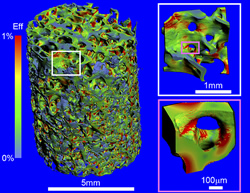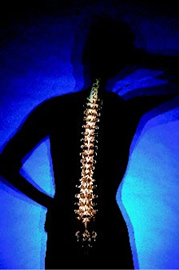
health
Osteoporosis in Menopausal Women
 According to reports from the National Osteoporosis Foundation, a projected 10 million individuals in the United States today are already estimated to have low bone mass, placing them at increased risk for osteoporosis - a condition that causes a loss of bone mass or density and increases a risk for fractures.
According to reports from the National Osteoporosis Foundation, a projected 10 million individuals in the United States today are already estimated to have low bone mass, placing them at increased risk for osteoporosis - a condition that causes a loss of bone mass or density and increases a risk for fractures.
The findings for women - especially women going through menopause – are even worse. Additional findings from the NOF found that out of the 10 million individuals estimated to feel the effects of osteoporosis, 80% are women, who can lose up to 20 percent of their bone mass in the five to seven years after menopause, making them more susceptible to osteoporosis. Additionally, doctors have found that women who are especially small and thin boned are at a higher risk.
The causes for osteoporosis are attributed to combinations of aging, poor bone growth during childhood and bone loss due to diseases, certain kinds of medical treatments and medications. Doctors have also found osteoporosis to have a hereditary link.
But while there are certain things out of our immediate control, it is equally helpful to understand how we can prevent what can become a crippling disease leaving many with broken hips, vertebrae, ribs, and more.
Here’s a quick list of preventive measures that menopausal women should consider at midlife:
Remain active – Doing something as simple as walking during your lunch hour can make a difference. To increase your upper body strength and make a bigger impact on your bone health, add five pound hand weights to your walk.
Calcium –Most individuals can acquire at least half of the calcium they need from food, and adding calcium-rich foods to your diet isn’t limited to dairy. Tossing almonds or sesame seeds into your recipes, grabbing an orange for a snack or sneaking some broccoli to your meal plans can help ensure you’re getting enough calcium. If you and your doctor feel you aren’t getting enough calcium in your diet, be sure to supplement wisely.
Vitamin D – Besides playing a role in fighting infections, the presence of Vitamin D plays a critical part in making sure Calcium is absorbed in the body.  Sun exposure can assist with increasing Vitamin D intake, but associated health concerns, including cancer and premature aging, requires looking into alternative means. Increase your intake of foods rich in vitamin D and check with your doctor regarding supplements to get the right balance of Vitamin D and Calcium in your diet.
Sun exposure can assist with increasing Vitamin D intake, but associated health concerns, including cancer and premature aging, requires looking into alternative means. Increase your intake of foods rich in vitamin D and check with your doctor regarding supplements to get the right balance of Vitamin D and Calcium in your diet.
Vitamin K – Eat dark green leafy vegetables to assist in your Vitamin K intake. Vitamin K is predominantly found in dark, leafy green vegetables including spinach and kale. Cabbage, cauliflower, brussel sprouts and even a few fruits, including avocado and kiwi, are also high in Vitamin K.
Cut out bad habits such as smoking and the excessive use of alcoholic beverages. The longer and more often you smoke, the stronger you increase your risk for bone fractures later on in life. Too much alcohol consumption also interferes with the balance of calcium in the body and can also lead to more falls and related fractures.
To learn more about the prevention and treatment of osteoporosis visit the National Osteoporosis Foundation.
Dotsie Bregel is Founder of the National Association of Baby Boomer Women, www.nabbw.com and the wildly popular Web site www.BoomerWomenSpeak.com, the # 1 site for “baby boomer women” online. She is passionate about empowering and educating midlife women.
© 2006-2013 ConceptDesign, Inc. Terms of Use
BoomSpeak - For babyboomers - by babyboomers.